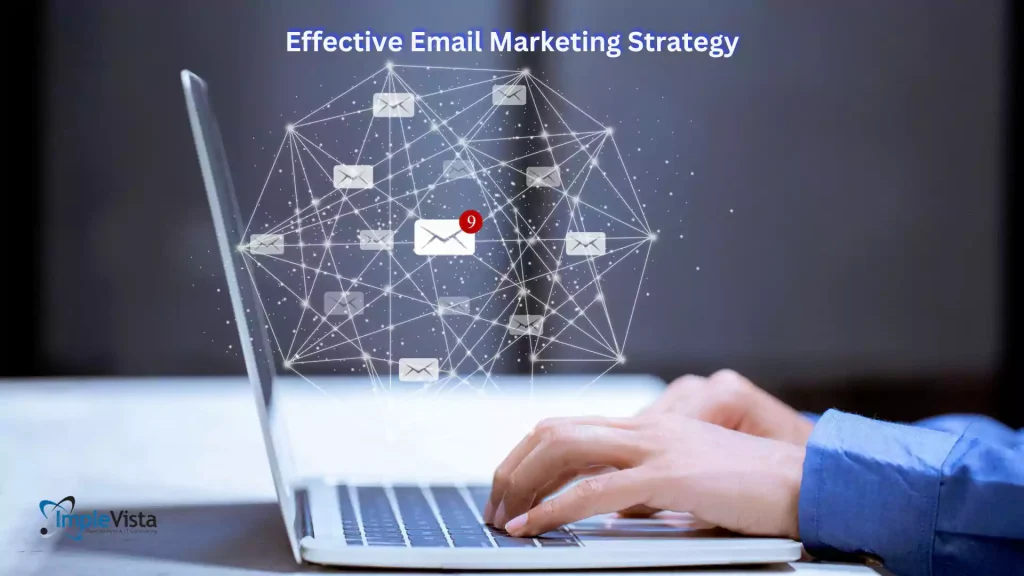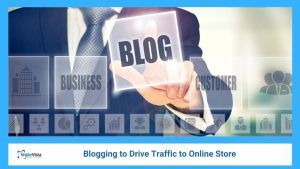Email marketing remains one of the most powerful tools for businesses to engage with their audience, increase sales, and foster customer loyalty. Whether you’re a startup or an established business, developing an effective email marketing strategy can greatly enhance your marketing efforts. This comprehensive guide will walk you through how to create an effective email marketing campaign, helping you maximize your reach, improve engagement, and ultimately drive conversions.
Why Email Marketing?
Before we dive into creating an email strategy, let’s first understand why email marketing is so effective:
Direct communication: Email allows you to communicate directly with your audience.
Cost-effective: Compared to other digital marketing strategies, email is relatively inexpensive.
Measurable: You can track performance with open rates, click-through rates (CTR), and conversions.
Customizable: Segmented and personalized campaigns lead to higher engagement.
Now, let’s look at how you can craft an effective email marketing strategy for your business.
Step-by-Step Guide to Create an Effective Email Marketing Strategy
This comprehensive step-by-step guide will help you create an effective email marketing strategy. Whether you’re an experienced marketer or just getting started, this guide will walk you through the key steps to building a solid email marketing strategy that delivers results.
Here’s a detailed explanation of each step for creating an effective email marketing strategy based on the points you provided:
Best Practices for an Effective Email Strategy
- Consistency is Key: Develop a regular sending schedule to stay top of mind with your audience.
- Don’t Overload with Emails: Balance frequency to avoid overwhelming your subscribers.
- Comply with Regulations: Make sure your emails comply with CAN-SPAM laws by including an unsubscribe link and providing a valid business address.
- Include Social Sharing Options: Encourage recipients to share your content with their network by adding social media icons.
-
Set Email Marketing Goals
Before launching any email campaign, it’s crucial to set clear and measurable goals. These objectives will guide your strategy and ensure that your campaigns align with your broader business goals.
Key Considerations:
– Brand Awareness: Are you trying to increase your brand’s visibility?
– Lead Generation: Do you want to collect more leads through email sign-ups?
– Sales and Revenue: Are you aiming to boost conversions and sales through email offers?
– Customer Retention: Is your goal to nurture existing customer relationships?
Your email goals could include improving click-through rates (CTR), driving traffic to your website, or increasing customer engagement. These goals will shape the content, tone, and frequency of your emails.
-
Understand Your Audience
A deep understanding of your audience is critical to the success of your email strategy. Analyze your current customer base, conduct surveys, or use tools like Google Analytics to gain insights. Segment your audience based on demographics, purchase history, or behavior. Personalized content targeted to specific segments is more likely to resonate with recipients, leading to higher open and click rates.
-
Build a Quality Email List
An email marketing campaign is only as strong as the list it’s built on. Focus on gathering a high-quality list of subscribers who have opted in to receive your emails. Avoid purchasing lists, as this can lead to low engagement rates and increased spam reports.
Tips for growing your email list:
– Use sign-up forms on your website.
– Offer valuable content (e.g., eBooks, webinars) in exchange for email addresses.
– Run social media campaigns encouraging email sign-ups.
– Use pop-ups and exit-intent offers to capture visitors before they leave your site.
-
Choose the Right Email Marketing Software
There are plenty of email marketing platforms available, such as Mailchimp, Sendinblue, and Constant Contact. These tools help you manage your email list, create professional templates, and track performance. Choose a platform that aligns with your business needs, offering features like automation, segmentation, and A/B testing.
-
Create Engaging and Relevant Content
Now that you’ve built your email list and chosen the right software, it’s time to create engaging content that aligns with your goals and resonates with your audience. A successful email strategy hinges on delivering valuable and relevant information to your subscribers.
Here are some key elements of high-performing emails:
Compelling Subject Lines: The subject line is the first thing your recipients see. Make it short, relevant, and enticing to encourage opens.
Personalization: Use the recipient’s name, recommend products based on past purchases, or send personalized offers.
Clear Call-to-Actions (CTAs): Every email should have a clear purpose. Whether it’s encouraging a purchase or signing up for a webinar, include a CTA that drives action.
Mobile Optimization: Over 50% of emails are opened on mobile devices. Ensure your emails are responsive and look great on any screen size.
Aesthetic Design: Use professional templates with an appealing design that aligns with your brand.
-
Optimize for Deliverability
Your email won’t drive results if it doesn’t land in the inbox. Focus on optimizing deliverability to avoid spam filters. Here are some ways to improve email deliverability:
– Use a double opt-in process to ensure subscribers genuinely want to receive your emails.
– Avoid spammy words like “Buy now!” or “Limited time offer!”
– Regularly clean your list by removing inactive subscribers.
– Authenticate your emails using SPF, DKIM, and DMARC.
-
Test and Refine Your Strategy
Continuous testing is essential to refining your email marketing strategy. Use A/B testing to experiment with different subject lines, content formats, send times, and CTAs. Tracking key performance metrics, like open rates, click-through rates, and conversion rates, will help you understand what works and what doesn’t.
-
Automate Your Email Marketing
Automation can save you time and ensure that your emails are sent at the right time to the right people. Set up automated workflows for key touchpoints in your customer’s journey, such as:
– Welcome Emails: Greet new subscribers and set expectations for future emails.
– Abandoned Cart Emails: Remind customers to complete their purchase if they leave items in their cart.
– Follow-up Emails: Re-engage customers who haven’t interacted with your brand in a while.
-
Segment Your Audience
Segmentation allows you to divide your email list into smaller groups based on various criteria like age, gender, location, purchase history, or interests. Segmented campaigns can lead to higher open and click-through rates because the content is more relevant to the recipient.
-
Analyze and Improve
Lastly, continually analyze your email performance to improve your strategy over time. Regularly review your campaign’s KPIs and use that data to optimize future campaigns.
– Open rates: How many people opened your email?
– Click-through rates: How many people clicked on the links within your email?
– Conversion rates: How many people took the desired action, such as making a purchase?
– Bounce rates: How many emails failed to be delivered?
By monitoring these metrics, you can better understand the effectiveness of your email marketing strategy and make informed decisions to enhance performance.
-
Identify Trends
Staying updated on email marketing trends is vital to staying competitive and relevant. Email marketing is constantly evolving, and understanding the latest trends will help you create more effective campaigns.
Key Trends to Monitor:
– Personalization: Sending personalized emails based on user behavior, preferences, and purchase history is becoming the norm.
– Interactive Emails: Adding elements like clickable polls, quizzes, and sliders to engage recipients more dynamically.
– AI and Automation: Leveraging artificial intelligence for smarter automation workflows and more precise targeting.
– Mobile Optimization: As most people open emails on mobile devices, ensuring mobile-friendly designs is crucial.
Research and adapt these trends to your strategy to ensure your emails stay fresh and engaging.
-
Grow Your Email Lists
A growing email list means more opportunities to engage with potential customers. Focus on attracting high-quality subscribers who are genuinely interested in your offerings, rather than purchasing email lists, which can lead to low engagement and spam issues.
Strategies to Grow Your List:
– Offer Lead Magnets: Entice visitors to sign up by offering valuable content, such as eBooks, whitepapers, discounts, or exclusive offers.
– Use Pop-up Forms: Timed or exit-intent pop-ups can be an effective way to capture email sign-ups before a visitor leaves your website.
– Leverage Social Media: Promote email sign-ups through your social media channels with strong CTAs.
– Host Webinars: Webinars are a great way to provide value while also gathering email addresses.
– Referral Programs: Encourage your current subscribers to refer others by offering incentives or exclusive offers.
An organic approach to growing your email list will ensure that your subscribers are engaged and more likely to interact with your campaigns.
-
Monitor Your Competition
Keeping an eye on your competitors’ email strategies can provide valuable insights into what’s working in your industry.
Steps for Competitor Monitoring:
– Subscribe to Competitor Newsletters: By doing so, you’ll see the type of content, frequency, and tone they use.
– Analyze Subject Lines: Look at how they structure their subject lines to capture attention.
– Observe CTAs: How do your competitors encourage action? Understanding their CTA styles can give you ideas for your own.
– Check Engagement Rates: If you have tools that allow you to estimate competitors’ email engagement, use them to benchmark your performance.
This competitive intelligence will help you fine-tune your own email marketing strategy and avoid potential pitfalls.
-
Audit Your Audience
Understanding your audience’s preferences, behaviors, and demographics is crucial for creating emails that resonate. An audience audit involves gathering data to identify who your subscribers are and what kind of content they are likely to engage with.
How to Conduct an Audience Audit:
– Analyze Past Campaigns: Look at which emails performed well and identify patterns in your audience’s engagement.
– Survey Your Subscribers: Send surveys to understand their interests, pain points, and how often they want to receive emails.
– Use Analytics Tools: Tools like Google Analytics or your email marketing platform can give you data on subscriber behavior.
– Segment Your Audience: Break your audience into segments based on demographics, purchasing behavior, or engagement levels.
An audience audit will provide a clear picture of who you’re sending emails to, allowing you to tailor your content more effectively.
-
Grow Your Email Lists
A growing email list means more opportunities to engage with potential customers. Focus on attracting high-quality subscribers who are genuinely interested in your offerings, rather than purchasing email lists, which can lead to low engagement and spam issues.
Strategies to Grow Your List:
– Offer Lead Magnets: Entice visitors to sign up by offering valuable content, such as eBooks, whitepapers, discounts, or exclusive offers.
– Use Pop-up Forms: Timed or exit-intent pop-ups can be an effective way to capture email sign-ups before a visitor leaves your website.
– Leverage Social Media: Promote email sign-ups through your social media channels with strong CTAs.
– Host Webinars: Webinars are a great way to provide value while also gathering email addresses.
– Referral Programs: Encourage your current subscribers to refer others by offering incentives or exclusive offers.
An organic approach to growing your email list will ensure that your subscribers are engaged and more likely to interact with your campaigns.
-
Segment Your Database
Segmentation allows you to send tailored emails to different groups of subscribers, rather than sending a generic email to your entire list. This increases the relevance of your emails and, therefore, improves engagement rates.
Common Segmentation Criteria:
– Demographics: Age, gender, location, income level, etc.
– Purchase Behavior: What products or services have they bought in the past?
– Engagement Level: How often do they open and click on your emails?
– Interests: Tailor your emails based on the categories they’ve shown interest in (e.g., fashion, tech, home goods).
The more targeted your email content is, the higher your open and click-through rates will be.
-
Pick Newsletter Types
The type of newsletter you send depends on your goals and audience preferences. There are several types of newsletters you can use to keep your audience engaged.
Common Types of Newsletters:
– Promotional Emails: Emails that advertise new products, special offers, or seasonal sales.
– Educational Newsletters: Provide valuable information or tips related to your industry, helping to build trust with your audience.
– Curated Content: Share useful articles, blog posts, or tools from around the web that your audience might find valuable.
– Event Invitations: Promote upcoming webinars, product launches, or live events.
Choose a mix of newsletter types to provide variety and keep your audience engaged over time.
-
Check Legal Requirements
Email marketing is subject to various legal regulations designed to protect consumers from spam. Failing to comply with these laws can result in fines or damage to your sender reputation.
Key Legal Requirements:
– CAN-SPAM Act (US): Requires you to include an opt-out mechanism in every email and avoid misleading subject lines.
– GDPR (EU): Requires explicit consent from subscribers to send them marketing emails. Subscribers must also have access to their data and the ability to opt out easily.
– Privacy Policies: Make sure your subscribers are aware of how their data will be used and that you’re handling it according to legal standards.
Always include an unsubscribe option and a clear sender address in every email to stay compliant with these laws.
-
Create Newsletter Templates
Using well-designed templates ensures that your emails are consistent, visually appealing, and aligned with your brand.
Tips for Creating Effective Templates:
– Branding Consistency: Use colors, fonts, and logos that are consistent with your overall brand identity.
– Mobile-Friendly Design: Ensure your templates are responsive, as many people open emails on mobile devices.
– Clear Structure: Make sure your emails are easy to scan. Use headers, subheadings, bullet points, and visuals to break up the text.
– Balance Text and Images: Too much text can be overwhelming, while too many images might affect loading times. Aim for a healthy balance.
Templates can save time, ensure design consistency, and improve the overall readability of your emails.
-
Determine Sending Frequency
Finding the right balance between staying top-of-mind and not overwhelming your subscribers is key to email marketing success.
How to Find the Right Frequency:
– Test Different Frequencies: Some audiences may prefer weekly updates, while others might be more responsive to monthly emails. A/B tests different sending schedules to see what works best.
– Consider Your Content: If you have frequent product updates or blog posts, a weekly or bi-weekly email might be appropriate. For less frequent updates, a monthly email could suffice.
– Survey Your Audience: Ask your subscribers how often they’d like to receive emails. Giving them the option can improve your engagement rates.
Over-emailing can lead to unsubscribes, while under-emailing may cause your audience to forget about your brand.
-
Create Newsletter Content
The content of your email is what keeps your audience engaged. Whether it’s promotions, blog updates, or product features, make sure that your content is aligned with the needs and interests of your audience.
Types of Content to Include:
– Exclusive Offers: Discount codes, VIP access, or early bird deals.
– Educational Content: Blog posts, industry news, how-tos, or case studies.
– User-Generated Content: Include testimonials, reviews, or content created by your customers.
– Product Updates: Inform subscribers about new arrivals, back-in-stock items, or product improvements.
The key is to keep your content varied and valuable to avoid disengagement.
-
Select Visuals
Visual content plays a crucial role in email engagement. High-quality images and videos can grab attention and make your emails more visually appealing.
Visual Content Tips:
– Use High-Resolution Images: Avoid pixelated or blurry images that can make your emails look unprofessional.
– Incorporate Videos: Video content can increase click-through rates significantly. Use videos to demonstrate products, provide tutorials, or share customer stories.
– Keep It Relevant: Ensure that every visual element supports your message. Random or irrelevant images can confuse or distract your audience.
– Use Alt Text: In case the images don’t load, always provide descriptive alt text to ensure the message still comes across.
Effective visuals make your email more engaging and increase the chances of your audience taking action.
-
Run Deliverability Check
Ensuring your emails actually land in your subscribers’ inboxes is crucial for the success of your campaigns. Deliverability refers to the ability of your emails to reach your recipients’ inboxes without being marked as spam or bouncing back.
Steps to Improve Deliverability:
– Authenticate Your Emails: Use SPF, DKIM, and DMARC authentication to confirm your emails are coming from a trusted source. This reduces the chances of your emails being flagged as spam.
– Maintain List Hygiene: Regularly clean your email list by removing invalid or inactive email addresses. High bounce rates can damage your sender reputation and reduce deliverability.
– Monitor Engagement: Email service providers (ESPs) prioritize emails from senders with high engagement. Make sure your recipients are interacting with your emails (e.g., opening and clicking) to maintain a good sender reputation.
– Avoid Spam Triggers: Stay away from spammy words or excessive exclamation marks in your subject lines and content. Also, avoid using too many capital letters.
– Test Your Emails: Use tools to check whether your email is likely to end up in spam folders. These tools will analyze your email’s content, subject line, and code to ensure everything meets spam filter requirements.
– Set Up a Feedback Loop: A feedback loop allows you to know when subscribers mark your emails as spam, enabling you to remove uninterested recipients and maintain a positive sender reputation.
By running a deliverability check, you can ensure that your emails are reaching your audience effectively, helping to boost engagement and conversions.
By following these steps, You’ll be able to create a robust and effective email marketing strategy that ensures your messages are reaching the right people, at the right time, with the right content. Consistent monitoring, testing, and refining of these processes will help you continuously improve your email campaigns for better results.
Why Choose Digital Implevista for Effective Email Marketing Services in Bangladesh?
- Expertise in Email Marketing: Digital Implevista specializes in crafting targeted and personalized email campaigns that resonate with your audience and drive engagement.
- Tailored Strategies: We understand that each business is unique. Our team designs email marketing strategies tailored to your specific goals, whether it’s boosting sales, generating leads, or improving customer retention.
- Data-Driven Approach: We leverage advanced analytics to monitor campaign performance, ensuring continuous optimization for maximum results.
- Cutting-Edge Tools: Our use of the latest email marketing tools and automation ensures timely, relevant, and impactful emails, improving open and click-through rates.
- Compliance and Security: We prioritize data protection and ensure all campaigns adhere to international regulations like GDPR and CAN-SPAM.
- Cost-Effective Solutions: Digital Implevista offers affordable yet powerful email marketing services that deliver a high return on investment.
Choose Digital Implevista for your email marketing needs in Bangladesh and experience professional, results-oriented campaigns designed to grow your business.
FAQs About Creating an Effective Email Marketing Strategy
Q: Why should I choose Digital Implevista for my email marketing campaigns?
A: Digital Implevista specializes in creating effective, data-driven email marketing strategies. We focus on personalized content, automated campaigns, and performance analysis to boost engagement, conversions, and ROI for your business.
Q: What is the first step to creating an effective email marketing strategy?
A: Defining clear objectives for your campaign is the essential first step.
Q: How often should I send emails to my subscribers?
A: The frequency depends on your audience and content. Test and adjust to find the optimal frequency.
Q: What is the ideal length for an email marketing message?
A: Short, concise emails tend to perform better, but it varies based on your audience and goals.
Q: How can I improve my email open rates?
A: Craft compelling subject lines, personalize the email, and ensure deliverability by avoiding spam filters.
Q: What is segmentation in email marketing?
A: Segmentation is the process of dividing your email list into smaller groups based on specific criteria to send more relevant content.
Q: Should I use email templates for my campaigns?
A: Yes, using templates ensures consistent branding and professional design.
Q: How do I grow my email subscriber list?
A: Use signup forms, offer incentives like downloadable content, and promote through social media.
Q: What is the role of automation in email marketing?
A: Automation streamlines processes and sends timely, personalized emails at crucial points in the customer journey.
Q: Why are my emails going to spam?
A: Your email might trigger spam filters due to spammy keywords, a poor sender reputation, or a lack of proper authentication.
Q: What metrics should I track for email marketing success?
A: Track open rates, click-through rates, conversion rates, and bounce rates to measure performance.
Crafting an effective email marketing strategy requires careful planning, testing, and continuous refinement. By focusing on your audience’s needs, segmenting your lists, and providing relevant content, you can ensure that your campaigns deliver value and drive results. With the tips outlined in this article, you’re well on your way to creating a successful email marketing strategy that boosts engagement, conversions, and business growth.








